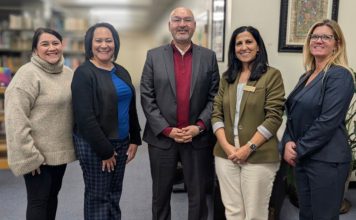Through the year, the Wildlife Education and Rehabilitation
Center has encountered triumphs and heartaches: It was the best of
times for those wild animals that came in near death and made
”
miraculous
”
recoveries; it was the worst of times for those which seemed to
be improving but didn’t survive.
Through the year, the Wildlife Education and Rehabilitation Center has encountered triumphs and heartaches: It was the best of times for those wild animals that came in near death and made “miraculous” recoveries; it was the worst of times for those which seemed to be improving but didn’t survive. Though all the wildlife passing through the doors of WERC receive the best of care and attention, these animals are a few of this year’s most memorable
Most Thrilling
A starving peregrine falcon was found in a Gilroy horse arena with a broken left wing. With several months of intensive TLC and medical treatment, the female peregrine was ready and anxious to go home. She speedily flew over the fruit trees and quickly disappeared from sight. About 15 minutes later, spectators happened to look upward and were rewarded with the exhilarating sight of the peregrine soaring high overhead. Out came everyone’s binoculars. She glided in large circles northward, farther and farther away until she was just a dot in the sky. Then suddenly, as onlookers held their breath, she turned south and flew straight over their heads. To everyone’s ecstatic surprise, from seemingly out of nowhere, came another peregrine falcon. The two circled each other a few times and then both flew westward and disappeared from our sight. It’s likely that these two may have vocalized out of human hearing range and recognized each other as family members. It was proof of the peregrine’s successful rehabilitation and a true “happily-ever-after” story.
Most Improved
Orion, the golden eagle, was found in June on the Eagle Ridge Golf Course in Gilroy. His leg joint was twisted 70 degrees and because this prevented him from capturing prey, he was near death from starvation. The original injury was exacerbated by being hit by an errant golf ball. To Orion’s great fortune, surgery was successfully performed in August to insert a metal plate in the leg, permanently straightening his leg, but allowing him to stand upright. In October, six weeks after the surgery, and after daily physical therapy, bandaging, foot massages, and medication, Orion’s leg cast was removed. He was transferred from his temporary indoor habitat (a retrofitted 3×3 playpen) to an outside enclosure where he was finally able to perch and stretch his wings. Orion’s first act was to take a bath, preen and return the gloss to his magnificent plumage.
For more of Orion’s story, go to www.gilroydispatch.com and see the article and photos by Chris Quirk and Lora Schraft.
Most Poignant
A peregrine falcon was admitted with a broken right wing and the bone was surgically stabilized with a pin. After several months, however, when the wing broke a second time due to bone weakness, WERC knew the bird would now never be able to swoop down at 200 mph to capture prey and thus could not be released. The wing was re-wrapped and staff felt that once it healed, perhaps the falcon could be given a second chance and be placed as an educational bird like Horus, WERC’s own non-releasable peregrine. Tragically, the infection proved to be extremely resistant to treatment and spread into the body. With much sadness, the bird was euthanized.
Most Astonishing Recovery
An Anna’s hummingbird was discovered in an office supply store. It was drastically weakened and this-close-to-death because its extreme metabolism requires that it eat constantly, and of course, there were no flowers or insects available in the building. It eyes were closed and it was already gasping. Once the tiny bird arrived at WERC, it was immediately warmed up and hand-fed a special protein-rich food. Ten minutes later, the caretaker was happily startled to see the hummingbird flying around in the basket and sipping nectar on its own. One day later, it was released outside in an area abounding with hummingbird feeders.
Most Sadly Shocking
A dead mother opossum was discovered in a backyard, her six babies desperately clinging to her lifeless body. The wet, dirty and hungry critters were brought to WERC, and cleaned, warmed and fed formula. The rescuer had found no signs of external trauma on the mother and it was unknown how she died. Then within the space of several weeks, one by one, the babies grew sicker and finally died. Opossums are normally a very hardy animal and do well in rehabilitation. So it seemed apparent that the mother must have by eaten something poisonous, perhaps a rat or slug that had eaten bait, and passed the deadly toxins to her litter while nursing. Opossums eat roadkill and other carrion and are highly beneficial to our natural environment. In addition, they benefit our gardens by eating snails and fallen fruit.
Most Exciting
Bobcats Antonio, Gabby and Lindsay were released back to their native habitats. The weather was gloriously warm and food was abundant. All the bobcats had been rescued as orphaned kittens and nurtured at WERC for up to eight months. Antonio had been found shivering in a restroom at Rancho San Antonio; Gabby was discovered in a bush in Gilroy and suffering from severe respiratory distress; and Lindsay was found in the East Bay with wounds from foxtails, burrs and ticks. Gabby was cared for by a surrogate mother in costume, but Antonio had the company of three older bobcats and didn’t require the attention of “mom.” Nor did Lindsay, who was originally treated at Lindsay Wildlife Museum and transferred to WERC when she was old enough to be on her own. When released back to the areas where they had been found, the bobcats took one look at their new surroundings and sprinted to freedom.













